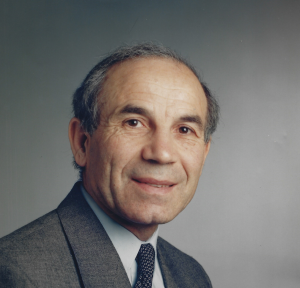
Mind-body problem
This essay was written by the philosopher Luigi Domenico Casiraghi. Now, he talks about the mind-body problem and how it has been perceived from ancient times to today.

Man, who are you?
We will answer this question from a particular point of view, namely the relationship “mind – body”, that Schopenhauer defines “Wlknoten”: “world’s knot”. Indeed, every human deed implies both the physical (the body) and the psychic part: conscience, thought and free will (the mind) which interacts with our body. Therefore, our question is: which is the relation in a human being between his mind and his body? The basic issue necessarily requires an answer to these further questions: what is a human body? What is a human mind? It comes to solving mind-body problem! Mind-body problem has imposed itself in recent times. Throughout the entire Philosophy History, it has always been declined as an issue related to the relationship between body and soul, it has showed different configurations and suggested varied solutions:
– body’s duality (sòma) – soul (psyché) (Platone);
– substantial unity body – soul (Aristotele-S. Tommaso);
– contrast of res cogitans-res extensa (Cartesio).
Cartesio will leave to philosophers the task of recomposing the opposition: from Spinoza to Leibniz, via Kant and Idealism, to get to Schopenhauer, Nietzsche and Freud. Nowadays, the predominant idea is to refuse, in the human being, the presence of a material reality (the body) and a spiritual reality (the soul), thus abandoning the typical dualism of the traditional thought, in order to consider the human being in his own concrete existence as unique exclusive event or as an individual traceable to any other living being in nature. Actually, since the 90’s of the last century, thanks to scientific research, in particular the neuroscience, the same problem gets exceptional modalities: in the number of contributions, in the strength of oppositions, in the novelty of methodologies, in the exchange of outcomes, sometimes stunning, in the most advanced experimentations with new research paradigms and operative intuitions. The chance of investigating in real life mental processes, due mainly to the functional magnetic resonance imaging (fMRI), indeed is opening up revolutionary sceneries in all disciplines that are studying the human being: not only in the scientific ones like medicine, biotechnology, neurosciences, but also in human sciences: philosophy, economics, law, ethics, politics.
In fact, the fMRI is like Galileo’s telescope: it allows us to see things on which we could only speculate, because it provides a direct access not only to the brain, rather on its ongoing functions. It is a new Copernican Revolution! Some topics that emerge into this revolution are the opportunities to study and hence to control the brain; to alter the brain’s functions, to enhance cognitive and emotional capacities; to modify some personality traits. The consequence is a vivid debate after this revolution that could not help involving also the issue of dualism: body-soul that, as mentioned before, marked both the classical and the modern philosophy. This dualism renews itself, in anthropological terms, as dualism: mind-body, or more specifically, mind-brain, resulting in the fundamental question: how can a conscience, a thought, a free will arise from a brain that is objective and very delicate in its biological structure?
There are two possible answers to this question:
1 – our mind is the result of what our brain does: for example, the bile is a liver’s secretion, as well as the mind is a product of our brain;
2 – our mind’s enigma, exclusive of the mankind, is solved at a level that is vastly superior to the physical-biological one
We know that the brain of a grown man is made of about 100 billion of nerve cells, called neurons, that are able to convert signals of different kinds coming from the external world into electric impulses. These impulses are transmitted from one cell to the other through molecular switches, called synapsis. There are 1.000.000 billion of synapsis in the human brain, which create hundreds of thousands of electric circuits that transmit impulses at various speeds.
We also know that our brain, to stay efficient, is constantly restructuring. It is able to continually change circuits and functions, because they are damaged or aged. Nowadays, we know many things, that at least partially let us understand how the brain makes us sense the world that surrounds us through our five senses and how it allows us to rework and translate it into concrete actions and abstract thoughts. That’s why, on the basis of neurophysiology, some philosophers and scientists claim the ontological identity between the mental and corporeal and erase all the typical structure of traditional psychology and of the common language in relation with other inner states. Only the physical area really exists, while the mental area should be erased, because it belongs to a false and misleading vision of reality. From this perspective, the man is simply a “piece of matter”. The difference between a human being and a stone consists only in the different degree of complexity that characterizes both material structures. For instance, this is supported by the Phisician Carlo Rovelli, who in the last chapter of his book Seven short physics lessons writes: “We, as human beings, are above all the subject that looks at this world…The study of our psychology is refined also covering our brain’s biochemistry… Our free decisions are determined by the interactions among billion of neurons into our brain. There is so much space over there, and it is childish to think that in this remote corner of the galaxy there is something special….What is specifically human does not represent our separation from nature, it is our nature”.
This is Rovelli’s theory and, I’ll say it again, it is also shared by contemporary philosophers and scientists, who think that some intellectual and volitional manifestations are just activities of a highly structured and refined brain, like the human’s one. Indeed, this is the same theory of the Australian School’s current of thought, called physicalism, represented by U.T. Place, J.J. Smart, D.M. Armostrong, who to the question: is our conscience a cerebral process? They answer: it is not rational to admit the existence of a conscience and of the correspondent neurophysiological configuration: these are just to expressions to refer to a unique reality. The common and traditional language shall give way to the scientific, adult and technical language. Therefore, uniqueness and ontological identity are in between a mental and physical state, where this latter is the true reality. The American scientist M.Minsky, author of The Society of Mind, supports a psychic pluralism, because he claims that every mental brain is devoted to oversee some functions within our organism. According to this hypothesis, Minsky dismisses easily a question that has been haunting philosophers thoughts since the origins, stating that: “As far as I am concerned, the so called problem mind-body does not include any mystery: mind is simply what the brain does….The meaning of intelligence is only to understand the group of cognitive activities that are still obscure to scientific research; its concept fades as soon as we know what it is”.
Minsky faces also the problem of the relation mind – machines, solving it with a catchphrase: “Are minds like machines? I did not oppose any doubt to this, I just asked: which type of machines? Even if the most consider degrading being considered as machines, I hope that this book makes instead blossom into them the thought of how wonderful is being machines equipped with such wonderful powers.” This catchphrase leads to the following question: are machines able to think? The brain is matter and brain’s matter carries out its own activities through calculation modules easily repeatable by a computer. Therefore, nothing prevents us to state that machines can carry out mental activities. This is what A.I. theorists support, who make sure that equipping a machine with a conscience is very simple, thus creating a cyborg; an operation that they deem useless, even if not impossible to implement. R. Searle, philosophy professor at Berkeley University and author of The Rediscovery of the Mind, wants to dismiss both the supporters of absolute materialism, and the proposer of the mind as a non-physical entity and prospects a solution, called biological naturalism. He claims that this solution has the extraordinary advantage of showing how nature and spirit or physical and mental states are not opposed concepts, but they can coexist because, in reality they are coexisting. “This is the theory I would like to emerge in the discussion”, writes, “the fact that a certain propriety is mental, does not imply that this is not physical and, vice-versa, the fact that it is physical does not imply that it is not mental as well”. In other words, for Searle, our mind lies in a double relationship with our brain: on one side it identifies itself with it, on another side it is dependent from it. Basically, for Searle both principles are valid: the mind is the body and the mind are produced by the body, namely by neurotic interactions. The scientist-philosopher claims that the mind certainly exists, but then he does not say “what is it” or “how it works” and “why it exists”, rather he just clarifies, as Minsky, that intelligence is a name that can be used only to define the group of cognitive activities that are still dark to scientific researches.
It is clear that in this kind of theory there is no room for mind, intelligence, consciousness, free will, in one word soul, as non-physical dimensions. The confirmation in his revolutionary “Engine of the reason, home of the soul”, the Canadian Paul Churchland of the current of thought called deleted materialism.He writes: “A hypothesis which enjoys nowadays of a wide acceptance, is the idea that human cognitive activity resides in an immaterial substance: soul or mind. It is also commonly supported that it survives to the death of the physical body… After this book it is quite clear that it is difficult to balance this familiar hypothesis with the theory of cognitive processes that is taking shape and with test results of different neurosciences. The theory of an immortal soul seems, to speak frankly, just another myth, fake not only marginally, but to its core.” However, there are also anti-reductionist neuroscientists and philosophers, as Karl Popper, Thomas Nagel, John Eccles that want to suggest a particular neo-dualism. Popper observes that in the present situation it is bizarre that the physicists themselves do not give any credit to materialism, while it still remains very popular among philosophers. Above all, he is concerned with defining the term “real”. Real is not just a group of solid and material bodies, but it is everything that acts in a direct or indirect way with them. Also, in physics force fields are accepted as real: gravity, magnetism, electromagnetism, just because they act on material things.
This has its feedback in the field of mind-body problem.
It is right the ability of our thought to take action on the matter and to transform it, always through man’s action, the evidence of the existence of thought’s contents and mind’s products: culture, art, science and philosophy that, Popper calls World 3, that interacts with World 2, made of the psychological provisions and unconscious states and with the World 1 made of physical entities. In other words, since the necessary condition to be real is the interaction with bodies, our mind is hence real because it interacts with our body. Nagels states that the reason (mind) implies an irreducible subjective experience; this does not mean that its operations can always be classified as subjectivism. He proves it recalling the skepticism’s objection: the claim that the reason is subjective, and it is made by the reason itself which, claiming its own subjectivity, deems to say something objective. Namely, the reason, can say something objective but it cannot be objectified, to mean that it cannot be considered from the outside as an object. The theory is that the reason since it cannot be objectified, is the assurance of objectivity, Hence it is something specific and irreducible; being able to objectify everything, it represents what cannot be objectified as the other things; it cannot be decreased to other things. The reason is beyond physical objects, the body and the brain. Eccles, Nobel prize in medicine and physiology for his studies on nerve cells, co-author with Popper of the book: The self and its brain, does not hesitate to claim: “The existence of the mind is doubtless and deny it is just a self-contradiction exercise”. Indeed, through what can we deny the existence of our mind, if not through an act of thought, namely a mental one? He concludes: “It is absurd to deny the existence of the mind just because we cannot understand it. The evidence of its existence must coexist with the mystery of its own nature”. As highlighted, the mind-body problem both in science and philosophy is crossed by a multitude of non-homogeneous glances and solutions.
The assumption that when our mind is active, our brain is active in its turn and that also certain mental activities are associated to the activation of certain areas and neuronal circuits, immediately arises the fundamental question abovementioned: how can from a brain which is objective, very fine in its own biological structure and physiological activity, arise a conscience, a thought, a fee will and expression of a subjective mind?
Idan Segev, neuroscience Professor at the Jerusalem University, writes: “Apparently, optical or electrical analysis of the human brain allow the researcher that observes the cerebral activity to predict in great detail what the person is going to do (e.g. which button will push, the right or the left one), few seconds before the same person is aware of that, namely able to say which will be its decision. Shall we say that the “brain” takes a certain decision and “we”, the masters of our brain, are still not aware of it. The brain researcher who observes from the outside the decision making, can say in advance which will be our decision. Hence, what is the meaning of our freedom of choice? Who chooses? Therefore, our mind, reducible to our brain or the man reducible to the sole physic-biological dimension? Is the non-physical dimension erased?
In other words, shall we think about the human being according to science’s standards, making a deconstruction of the person and a reduction of it to the last constituent elements (bio-molecules, genes, proteins etc), or acknowledge him something more, that transcends the physical-biological dimension and that can be the research topic of a metaphysic-philosophical science? Certainly, man remains a stranger, that need to be continuously rediscovered through a careful consideration and a study fee of cultural and scientific preconceptions.
Here the question: Man, who are you?
The aforementioned Tomas Nagel published in 1974 the famous articled with the curious title: How does it feel like to be a bat? The issue that comes into focus concerns the ontological status of the subjective experiences, namely if the non-material dimension of our mind is just an illusion or if it is actual reality. Nagel observes that the bat has doubtless some objective experiences, were they only related to pain, hunger or the perception of the external world through a sonar that allows him to catch remote objects, thus creating its own world’s representation. Nagel’s challenge deals with the change of identification with the bat: not figuring out what we will feel becoming that animal, rather imagine what the bat really feels. It is clearly an experience that we are not given to perceive. Then, we have to conclude that this subjective experience does not exist, just because it is not accessible by any other subject, except who lives it, the bat in this case, and hence not objectively detectable? Apparently no! Indeed, it is a bat’s own experience: this is enough to say that it is real. Here the mistake of materialist reductionists: equalize unknowability with inconsistency. Even if that subjective experience will remain recognizable, this is not a reason enough to claim that it does not exist. Science was born, raised and progressed in an impressive way on the assumption to restrict an objective independent field within our mind. However, it is not correct to submit to methods and principles of science, the subjective dimension that we excluded a priori. Science ignores this dimension, but disregard does not mean deny.
It is legitimate to ask this question: what’s the conscience, namely thought, mind?
Conscience is always “the conscience of”, namely it is nothing in itself, it is the “void of being”, specifies Sartre, regardless to the reference to a certain content, meaning it is nothing, if not as manifestation, appear, presence, being of an object or a specific content. Indeed, the Greek work for “truth” is Alétheia: not hidden, evident, existing.
In other words, we want to claim the constitutive relationality, in philosophical term, the intentionality (from the latin: intentio-tendenza a/verso), intrinsic to the consciousness as such; more simply its opening to the world, to reality, meaning that it is always something’s consciousness, which in its turn is not a consciousness. This opening is an immediate data, that does not require any demonstration, because it is unprovable. It is about a direct experience, that is a “lived experience”. Now, it is true that our consciousness (our mind) requires the full functionality of our bodily organs, our senses and our brain which undergo the action of external object and react accordingly to this action. However, it does not identify itself with the physiological problems of the sense organs or of the brain, because it is something that, despite being made possible by those processes it differs from them essentially and quantitatively. This is proven by the fact that we have as a general rule the chance to know all things. Aristotele already claimed this in his book About the Soul: “The soul, (that is the conscious and intelligent subject) is in some way all things”. If it was a body, it could have this ability: indeed, our eye can only see colors, our ear only hears sound, our nose only smells aromas etc. Using our intellect, thought, mind we can rather know all the things. Hence, our consciousness (thought and mind) shall not be nothing in itself, just to be everything, to be pure transparency of any object distinct from itself. As a window, that shows everything outside without being seen, while when it is observed as such, in its own shape, in its own dimensions etc., becomes an object like many others, because it does not act as a window anymore. Conscience, as the reason of Nagel, can say something objective but it is not objectifiable in itself, meaning that it cannot be consider as an object from the outside. That’s why our consciousness is not pure transparency of each object distinct from itself, but it is also consciousness of the self, namely self-consciousness, that is the ability to think about itself and about its actions. This activity could be impossible for a body, that will work as a diaphragm or a screen (in fact our eye does not see itself while watching, hearing does not hear itself while perceiving a sound). However, this ability to think about ourselves and on our actions also implies the ability of self-determination, hence freedom. Indeed, freedom is not just lack of need, instead it also implies the mastery of our own activities. We are free only when we are the masters of our choices, decisions and actions.
Hence, the consciousness (mind) being transparency and self-consciousness, has nothing physical, is not material, it is the extra that grounds and justifies the rationality and hence our being a person. With the term “person” we precisely mean that a man is a bodily, rational, self-conscient and free being. From here human being’s features that make it a person: namely subjectivity, rationality, identity, freedom, that is the ability to self-determine and self-propose its goals. The man, so understood, solves the old problem of body-soul unity, so that the body is not the antithesis of the soul, rather its way of being in the world and relate to it. This also solves the problem, still debated, of the relationship mind-brain.
A phenomenological analysis, led in this perspective, hence allows us to delineate the reality of the human being:
– A bìos, that is a physical – biological life;
– A psyche; namely a mind: psychological dispositions and abilities to think and want;
– A spirit, namely the self or the conscient self, self-conscient and free, usually called soul.
Three levels of a unique whole, the person, whose manifestations are in any moment the result of the integrated action of three components, that make it like this. If this is the man there is no room for the theory of physicalists of the Australian School or of the reductionist scientists-philosophers like C.Rovelli, M. Minsky, R. Searle and P. Churchland, who reduce our mind to what our brain does. The relation, indeed the punctual correspondence between brain’s and mind’s activity, the fact that our mind demands the complete functionality of all our body organs, of our senses and our brain, do not necessarily imply their identity, that is a reduction of mind to the brain. Our brain and our senses are the condition for the smooth working of our consciousness, our thought, our will, hence of our mind, but not its cause. The cause is the conscient and intelligent self, since it is the same man who thanks to the body experiences the world and thanks to it mind, is conscient and self-conscient, thinks and wants. K. Popper and J. Eccles in their abovementioned work say: “The self performs two actions: receives and possessed by the self, rather than the reverse…The activity of the self is the only authentic one that we know”
The big discovery of neurosciences indeed is the brain’s plasticity: for our entire live, our brain modifies and evolves according to how we are thinking and how we are using it. Depending on how we are thinking the neurotransmitters modify themselves. Changing our thought, we are also changing our habits. As the America philosopher and psychologist J.James states: “A human being can change its own life only changing its own way of thinking”. But we have seen that this close relationship between mind and brain does not necessarily involve their own identities, because the mind is not a thing and that for this reason it cannot be a research and science topic. Idan Segev confirms this and he asks himself: “The knowledge of the brain expands and deepens very fast. However, there are still important issues to solve. The biggest mystery, the most outstanding question, is how the nervous activity of our brain results in the specific individual experience: love, hate, pain sensation, happiness after viewing a known face, etic”. And he continues: “Maybe there is no need to hope that modern science, even if it so capable, explains in a scientific way all these things, even if it is possible that the artificial brain that we will build in the future would perceive exactly the same feelings”. But even then, the observation of Albert Einstein will remain valid: “It will be impossible to describe everything in scientific terms, it would be pointless, like describing a Beethoven’s symphony as the variation of pressure waves”. Indeed, G. Edelman, biologist and medicine Nobel prize, writes: “It would be foolish to prefigure the shape that science will take in the future. It is enough to know that whatever the shape taken, the conscient life will always be richer of the description provided by the science.”

